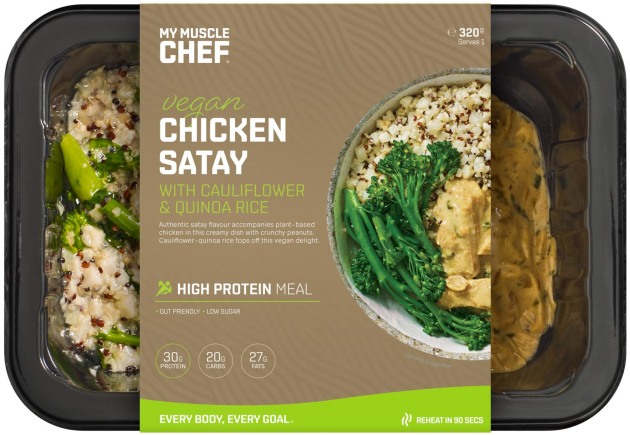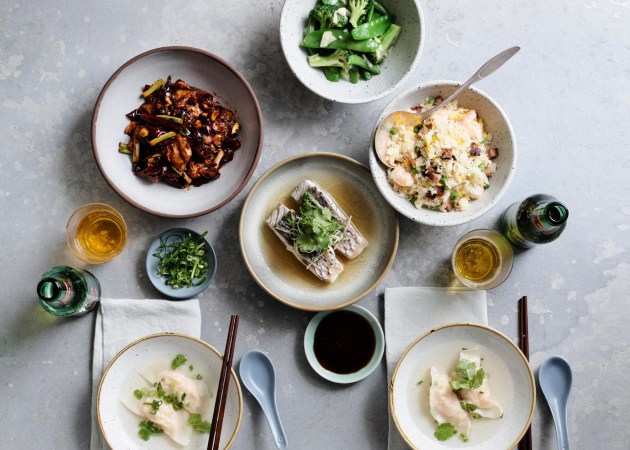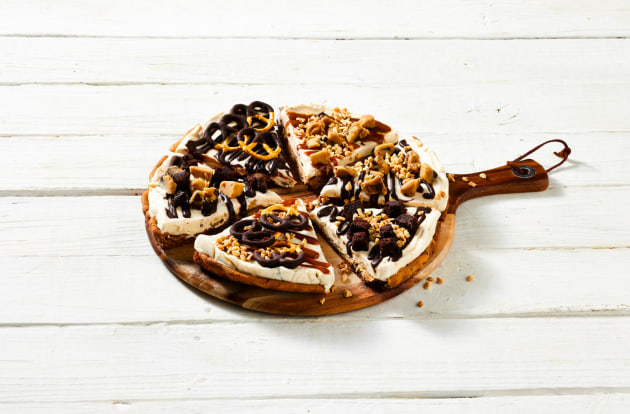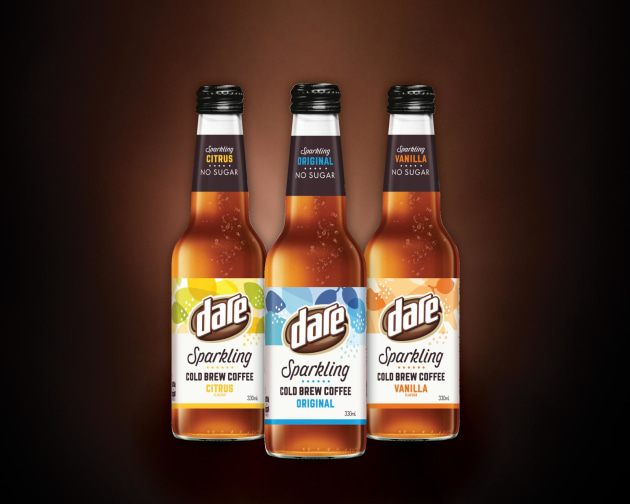Meaningful stories, plant-based everything and foods to improve your mood are just some of the trends to watch in 2021 according to Innova Market Insights’ annual Top 10 Trends report. Kim Berry takes a look at what’s hot. This article originally appeared in the January/February issue of Food & Drink Business.
1. Transparency triumphs
Brands are increasing their transparency to meet evolving consumer demands, building on 2020’s top trend of storytelling. Consumer interest in learning more about what products are made of and how they are made is becoming more sophisticated. Ethical, environmental and clean label expectations are also on the rise.
Innova Market Insights co-founder, director and trends expert Lu Ann Williams said: “Brands have to up their game when it comes to brand visibility. It is about trust and engagement. A meaningful story allows you to connect with consumers in a new and different way.”
Brands that adopt and pair new packaging technologies such as invisible barcodes and near-field communication with creative and meaningful storytelling will forge a successful strategy.

2. Plant-forward
The growing mainstream appeal for plant-based products is driving expansion into more market categories and regions. Williams says: “In my 25 years of experience I have never seen anything move faster or grow so big so quickly. This will be such an interesting year to see what happens as plant-based moves mainstream and into more indulgent categories.”
Its increasing popularity will drive expansion including accelerated demand for new formats, plant proteins and more sophisticated alternatives.
Innova has tracked the plant-based trend, from emerging in 2019 to a revolution in 2020 with consumers considering plant-based alternatives for health, diet variety, sustainability and taste.
Then there are cell-based technologies. Williams says: “Questions are, will they fit into the plant-based market, or maybe take the place of some of them, or become bigger than some of the plant options. Again, in terms of diversification, we’re seeing lots of developments in fish alternatives and snacking and even the repositioning of margarine as plant-based butter. There are different regional drivers and consumer aspects, but it is a phenomenal trend and we don’t see it slowing down anytime soon.”

3. Tailored to fit
Personalised nutrition is in the spotlight as consumers look for food and beverages that fit their lifestyles. People will continue to expect a tailored approach to how and what they eat, with technological breakthroughs, constant new launches and sensorial experiences providing solutions to create customisable lifestyles.
Williams says 64 per cent of consumers have found more ways to tailor their life and the products they buy to their individual style, beliefs and needs.
“Gluten-free was the first trend where consumers got the idea of the way I eat can make me feel different to the way other people eat. So just like entertainment and clothes can be tailored, food is the same. We’ve been talking about personalised nutrition for around 15 years and now we really see things taking off,” she says.
When asked how they would like their nutritional experience personalised, consumers’ top three responses were: based on my nutritional needs; based on my lifestyle and ethics; based on my body composition.
Williams said the annual CAGR 2016-2020 growth globally in food and beverage launches which made specific claims saw keto grow 165 per cent, and plant-based up 36 per cent from a small base.

4. Omnichannel eating
As foodservice and retail domains increasingly overlap, consumers can eat what they want, when and where they want it. The use of meal kits/starters and more sophisticated ingredients is also growing.
For Williams, this is one area the direct impact COVID-19 had on developing trends can be seen. Innova found 46 per cent of global consumers agreed that restaurant branded products are a convenient way to achieve the restaurant experience/flavours at home.
“This ties into cross-channel convenience, accessible indulgence and richer experiences. One in three consumers said they ordered more online from restaurants for home delivery in the last year,” she said.
It also flows across into more familiar products, where consumers are looking for the familiar – e.g., potato chips – but with new flavours as well as opening up a lot of areas, like meal and seasoning kits.
“This trend is not going away, consumers are going to want more and more access to the food they want anytime and anywhere,” Williams says.

5. In tune with immune
Ongoing anxiety stemming from COVID-19 is encouraging consumers to prioritise their health. Innova says 60 per cent of consumers were increasingly looking for food and beverage options that would support their immune health. As well as immunity-boosting ingredients playing a significant role, research and interest in the microbiome and personalised nutrition as ways to strengthen immunity will accelerate.
Williams says this trend crosses categories and is intertwined with other trends. “With plant-based, we’re seeing increased interest in botanical ingredients in the wake of COVID-19 – they’re functional, they give flavour, taste and colour as well as health benefits.”
More than 50 per cent of consumers said that due to COVID-19 they have spent time educating themselves on ingredients and procedures that can boost their immune system.
“They’re doing things like getting more sleep, being more active, but also choosing foods that are naturally high in nutrients including vitamins, minerals and antioxidants – which ties back into the trend of inherent nutrition,” Williams says.
6. Nutrition hacking
Technology to drive functional food understanding, nutrition advice and the environmentally conscious nature of products is becoming more popular. Consumers are using technology more often to search for balanced formulations and improved nutrition-based products, as well as those with sustainability or ethical impact claims.
Innova found four in five consumers said: “I believe in progress in food and beverage through science”.
The challenge here, says Williams, is how to position between natural and tech driven. How do you leverage the best of both worlds when answering the consumer dilemma of, ‘I’m prepared to compromise on naturalness for a product that fits my dietary needs’.
“It’s interesting to see what types of ingredients will be used, including increased interest in adaptogens,” she says.
7. Mood: The next occasion
With consumers increasingly prioritising their holistic health and wellbeing, new products and technological applications will focus on how food and beverages influence the physical, mental and emotional aspects of health. New mood-based product development is seeing staggering growth as are on-pack labelling claims.
Adaptogens are being promoted for all kinds of benefits including reducing stress, improving mental health and skincare. Williams says while there has been much focus on occasions like breakfast and snacking, mood and sleep are becoming occasions in themselves.
“The potential to capture consumers with emerging mood platforms like energy and relaxation are well established, small but growing. Some of the new ones could be sleep albeit from a very small base. Plant-based functionality includes botanicals, collagen peptide and GABA are also becoming more mainstream,” she says.

8. Product Mashups: When Trends Collide
This is where variety and multifunctionality appeal to consumers eager to discover new products, formats and categories, for all occasions. And to have some fun. Innova says three in five consumers are interested in trying new sensory experiences, i.e., aromas, tastes, textures, colours and sensations.
Williams says the adventurous consumer looking for experience, flavour, storytelling and texture is causing hybrid innovation take off.
“There are great opportunities for the food service sector here. In China, Pizza Hut made a drinkable pizza with peach-flavoured cheese, in the US Dunkin’ Donuts has been exploring cereal.
“In Australia, Ben & Jerry’s Doughlicious, served ice cream came in the form of a pizza with a dough crust, which was served by the slice.”

9. Modern Nostalgia
While consumers want to try regional and exotic flavours inspired from around the world, they also want local appeal. Innova says global trends will be given a local twist to provide the familiar while also offering a heightened sensory delivery through surprising and unexpected flavours, textures and formats.
“This is also very interesting because we see huge interest in food provenance while also revealing another COVID-19 impact of retreating to the familiar. But as we yearn for safety, there’s also that feeling of going back to the restaurant you used to go to as a kid and feeling sad if it hasn’t been updated at least a little bit.
“So, it’s about global trends that get a local make-over, or something that makes us feel safe and secure but has been modernised by looking at exotic ingredients in familiar products,” Williams says.

10. Age of the Influencer
Storytelling, brand connection and shareable social media experiences still reign supreme, but expect to see a slow shift to more reliable influencers and a gradual expansion of the diversity of influencers to drive trust and credibility.
“Digital transformation is informing everything around food. It fuels the innovation pipeline. While influencer endorsements will continue to give products and brands a push, there is a slow shift to more reliable influences occurring,” Williams says.
Two in five consumers say they don’t believe blogs, bloggers and influencers are honest about the products they promote. “There is a growth of science-based influencers, so we’re in a change period and we’re slowly moving back to seeing consumers working out who they do trust by themselves,” she says.










